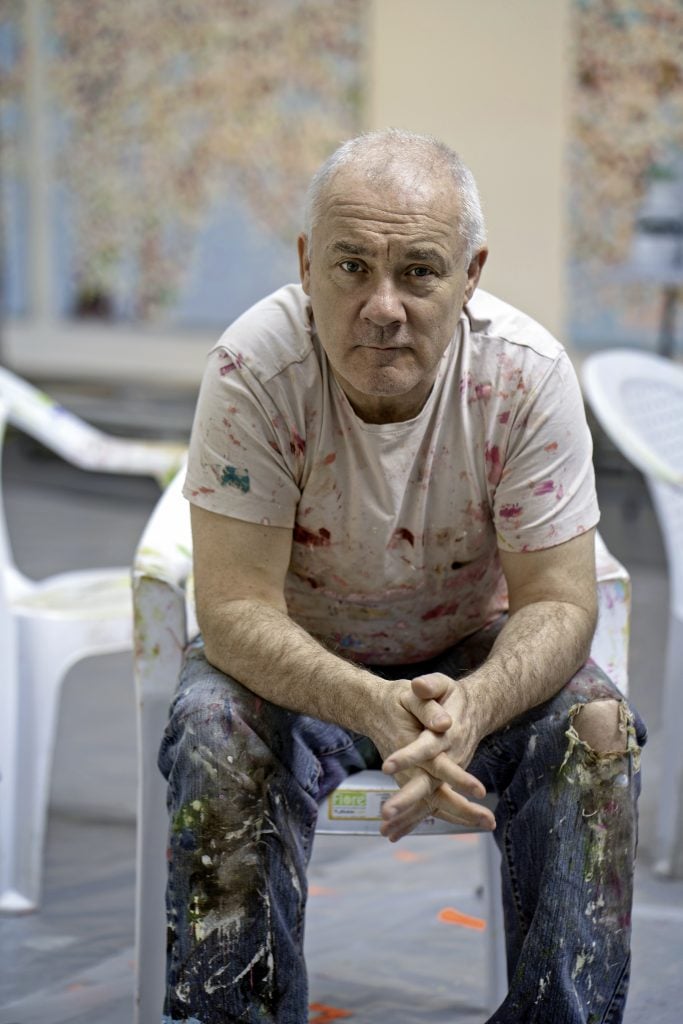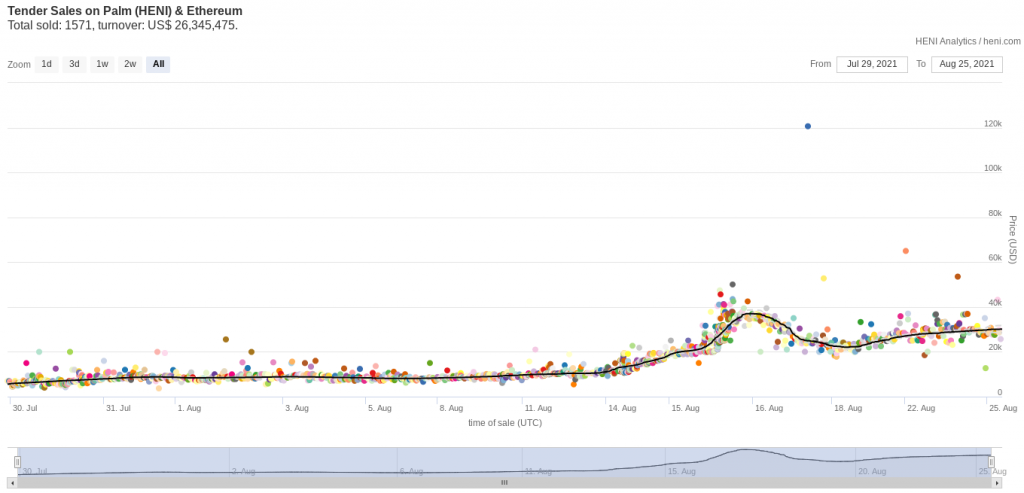Market
Damien Hirst’s NFT Initiative, Which Asks Buyers to Choose Between a Digital Token and IRL Art, Has Already Generated $25 Million
'The Currency' is based on a selection of spot paintings, ranked by rarity.

'The Currency' is based on a selection of spot paintings, ranked by rarity.

Caroline Goldstein

Earlier this summer, Damien Hirst announced his latest project: a showy NFT initiative called “The Currency.” It involved selling 10,000 unique hand-painted dot-covered works on paper, each one corresponding to a nonfungible token. But wait, there’s more.
Each of the hybrid painting-NFTs, available to collectors at the low, low price of $2,000, has a very particular stipulation. Buyers would have one year to decide if they wanted to keep the NFT, in which case the physical artwork would be ceremonially burned. Or they could keep the physical work, and relinquish rights to the blockchain-based artwork.
In essence, “The Currency” pitted Hirst’s foray into the new world of digital art against his old-school practice, asking the art market to decide which was more valuable. (At the height of Hirst’s market heat in 2007, a work on paper by the artist sold for more than $393,065.)
At the time, it sure sounded like Hirst was, ahem, jumping the shark, with a philosophical gimmick. But just about two months into the project’s debut, the artist took to social media to announce that sales generated by “The Currency” have reached $25 million already.

The graph of Hirst’s NFT sales from “The Currency.” Courtesy of HENI.
A statement posted today to the Discord server of HENI Analytics, an arm of the company that partnered with Hirst on the project, broke down the sales for the past six, 12, and 24 hours for the NFT works. In the last 24 hours, 14 sales totaling almost $400,000 were recorded, with a maximum price of $43,204 and minimum price of $3,694.
Since the project launched in July, there have been a total of 1,571 sales on secondary market NFT platforms adding up to just a bit more than even the whopping eight-figure Hirst boasted about, at $26,345,475.
The maximum price paid so far sits at $120,614 for a work titled Yes, which is considered one of the rarer of the pieces in the series because it has a single word title. HENI ranks each of the works in “The Currency” for its rarity based on algorithms that analyze density of the spots, colors used, and what kind of words are in each title, which all come from Hirst’s favorite songs.
OpenSea’s public data on the project confirm the basic trends suggested by HENI and Hirst. It shows that the floor price (or lowest available price) for an NFT from “The Currency” sits at 8.8 ETH, or $28,500, more than 10 times its original price. (The OpenSea floor price is updated hourly.)
According to OpenSea snapshot of the project, by far the most active day in the trading history of “The Currency” was August 14, when 249 of the NFTs changed hands. In recent days things have settled down considerably, with anywhere between 10 and 20 sales per day.
One recent sale, for the work A Way of Life, was originally listed 10 days ago on the secondary market by its owner, who goes by @Quality, for 18.88 Ethereum (over $60,800). Finding no takers, it was re-listed a day later for 8.8 Ethereum (or $28,500). At that price it was sold 8 days ago for 8.49 Ethereum ($27,200) to @syzygyfinance, which re-listed A Way of Life just two days later for 14.8 Ethereum (or $47,800).
Today @syzygyfinance adjusted its asking price down to 9.75 Ethereum ($31,300). It sold at that price to @liquiddyor, meaning @syzygyfinance realized about $4,000 in profit on the flip.